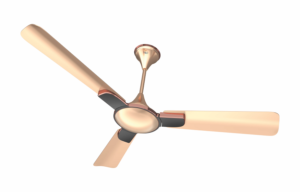
A swimming pool is a valuable addition to any home, offering fun, relaxation, and a way to stay cool in hot weather. But without the right protection, pools can become a maintenance hassle and even a safety risk. That’s where pool cover installation comes in. Whether you’re preparing for the winter season or simply want to keep your pool clean and safe year-round, installing a pool cover is a smart investment.
This guide will walk you through the different types of pool covers, the installation process, benefits, and cost considerations, so you can make an informed decision.
Why Install a Pool Cover?
Pool covers serve more than one purpose. They are essential tools for maintaining your pool’s condition, reducing maintenance time, and enhancing safety. Here’s what a pool cover can do:
- Keeps debris out: Prevents leaves, dirt, and insects from falling into the pool.
- Improves safety: Helps prevent accidental falls, especially for children and pets.
- Reduces evaporation: Conserves water and keeps your pool full longer.
- Maintains temperature: Retains heat in the water, saving energy costs.
- Minimizes chemical use: Reduces the breakdown of chlorine and other chemicals caused by UV rays.
- Prepares your pool for winter: A secure winter cover protects your pool during off-season months.
Types of Pool Covers
Choosing the right cover depends on your pool type, climate, budget, and your specific needs. Here are the most common types:
1. Solar Covers (Bubble Covers)
- Designed to trap heat from the sun and warm the water.
- Float directly on the pool surface.
- Easy to remove and install manually.
- Inexpensive and energy-efficient, but offer little protection against debris or safety.
2. Winter Covers
- Made from heavy-duty material to protect pools during off-season.
- Anchored around the edges using water bags or straps.
- Prevents algae growth, water contamination, and liner damage.
3. Safety Covers
- Typically made from strong mesh or solid vinyl.
- Anchored to the surrounding pool deck with spring-loaded straps.
- Designed to hold weight and prevent accidental drowning.
- Ideal for households with children or pets.
4. Automatic Pool Covers
- Retract and extend with the push of a button.
- Provide year-round convenience, safety, and efficiency.
- Typically built into the pool design and installed on tracks.
- Most expensive but offers maximum benefits.
The Pool Cover Installation Process
Installing a pool cover can range from a simple DIY job to a professional project, depending on the type. Here’s an overview of how the installation process works for the most popular types:
Manual Cover (Solar or Winter Cover)
- Clean the pool: Remove any debris from the pool water and surrounding area.
- Measure the pool: Ensure the cover size matches the pool’s shape and dimensions.
- Lay out the cover: Spread the cover across the surface evenly.
- Anchor the cover: Use water bags (for winter covers) or straps and anchors as needed.
- Trim excess material: If needed, cut the cover to fit around ladders or steps.
Safety Cover Installation
- Mark anchor locations: Measure the pool and mark where the deck anchors will be drilled.
- Drill holes: Use a hammer drill to install brass anchors into the concrete.
- Attach the cover: Hook the cover straps to the anchors and tighten them evenly.
- Tension check: Ensure the cover is taut and free of sagging.
Automatic Cover Installation
Due to its complexity, automatic covers are best installed by professionals. This process includes:
- Installing tracks or guides along the pool’s perimeter.
- Mounting the motor and cover housing.
- Connecting the control system for automatic operation.
- Testing and calibrating for smooth operation.
Cost of Pool Cover Installation
The cost of a pool cover varies based on the type, size of your pool, and whether you’re installing it yourself or hiring a professional.
- Solar cover: $100 – $400
- Winter cover: $150 – $700
- Safety cover: $1,000 – $3,000 (including installation)
- Automatic cover: $8,000 – $15,000+
Professional installation adds an additional $200 – $800 for manual or safety covers, depending on pool size and complexity.
Tips for Choosing the Right Pool Cover
- Determine your primary goal: Are you focused on safety, energy savings, or keeping the pool clean?
- Consider your climate: In colder regions, a durable winter or safety cover is essential.
- Think long-term: While automatic covers are expensive, they provide convenience and protection throughout the year.
- Check compatibility: Make sure the cover works with your pool’s shape (rectangular, oval, freeform).
- Look for warranties: Quality covers often come with multi-year warranties against damage or wear.
Conclusion
Pool cover company Indianapolis installation is a wise investment for any pool owner looking to reduce maintenance, enhance safety, and prolong the life of their pool. From basic solar covers to high-end automatic systems, there’s an option for every budget and need. Whether you handle installation yourself or hire a local pro, a properly installed pool cover ensures you get the most enjoyment out of your pool—without the hassle.
Start exploring your options today, and protect your pool with confidence year-round.






